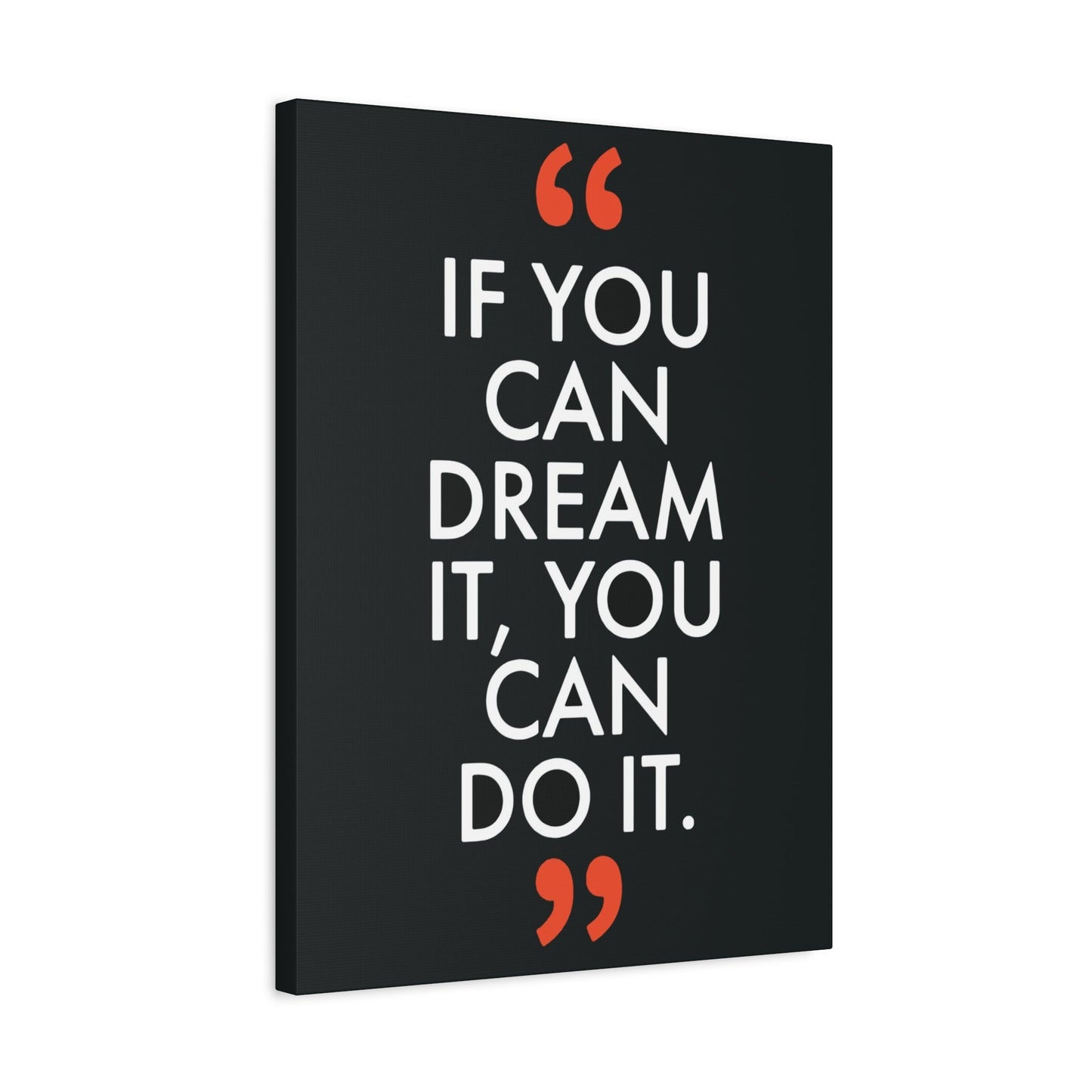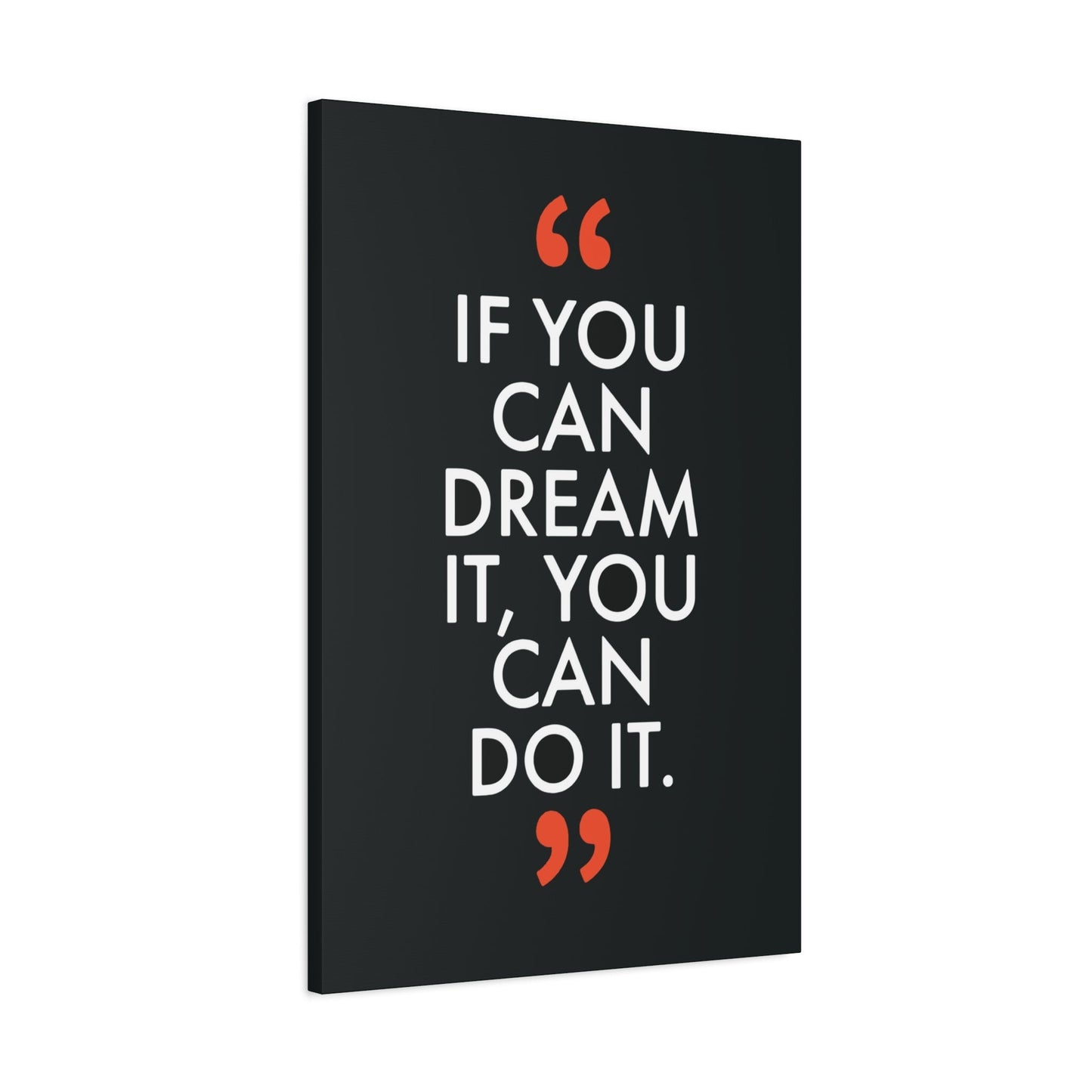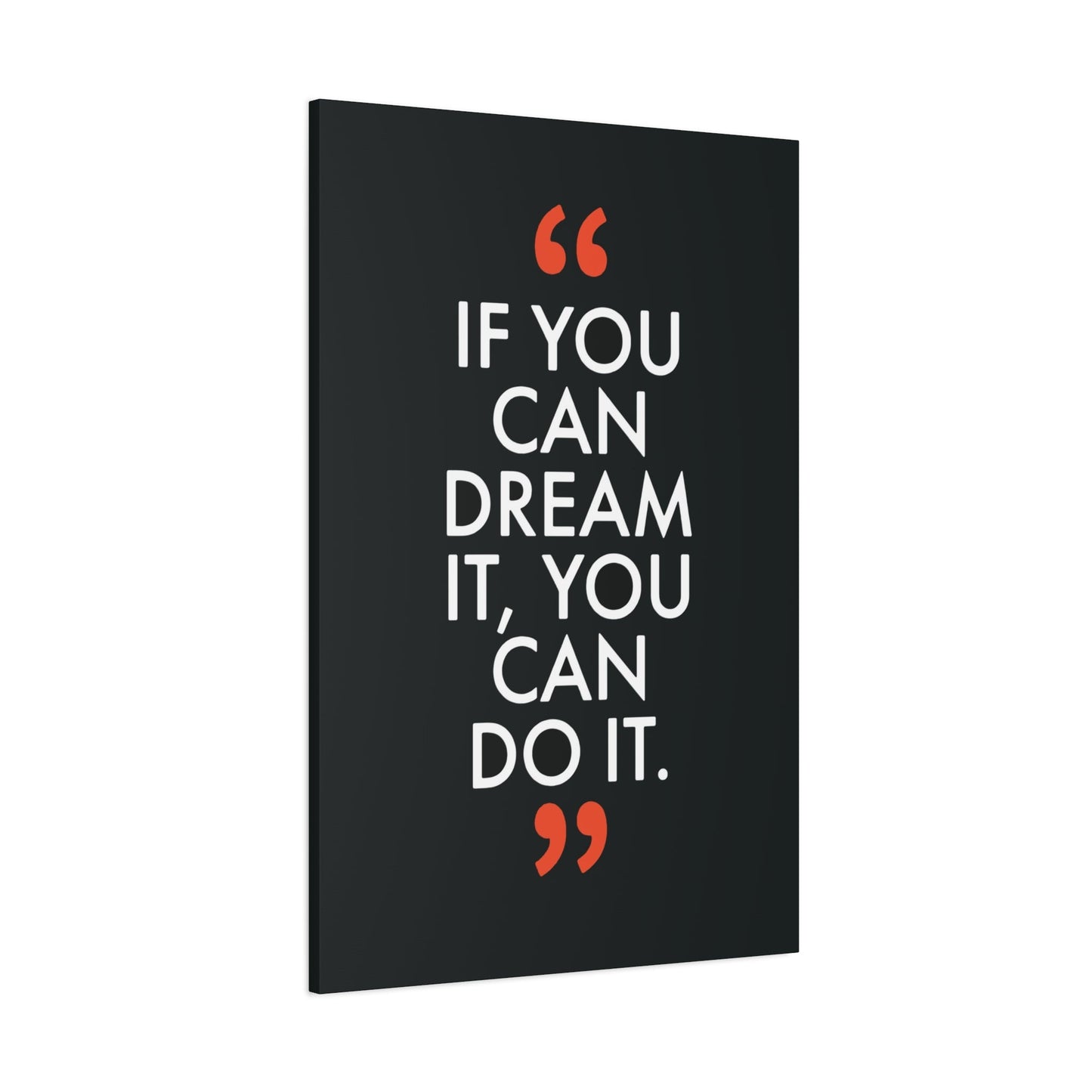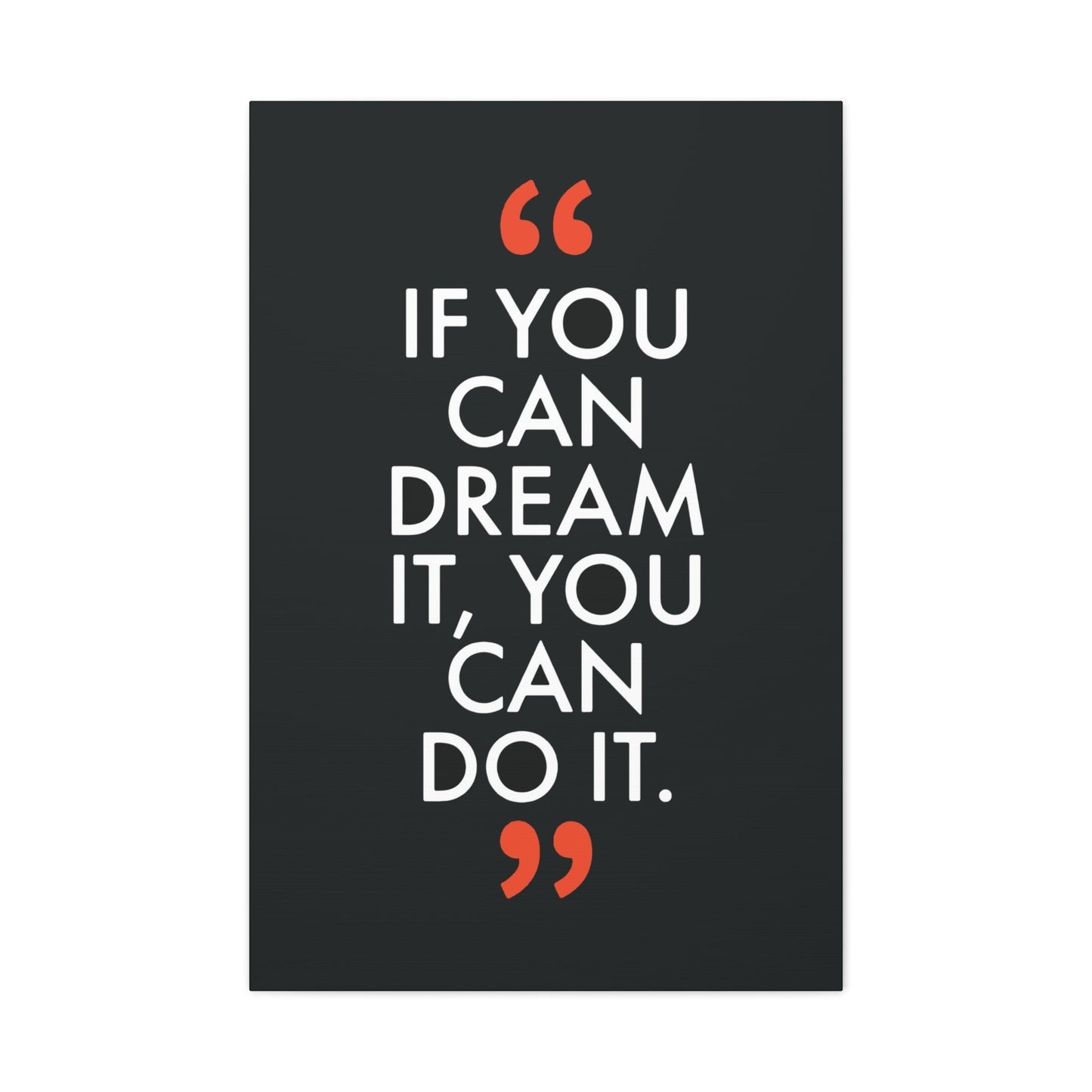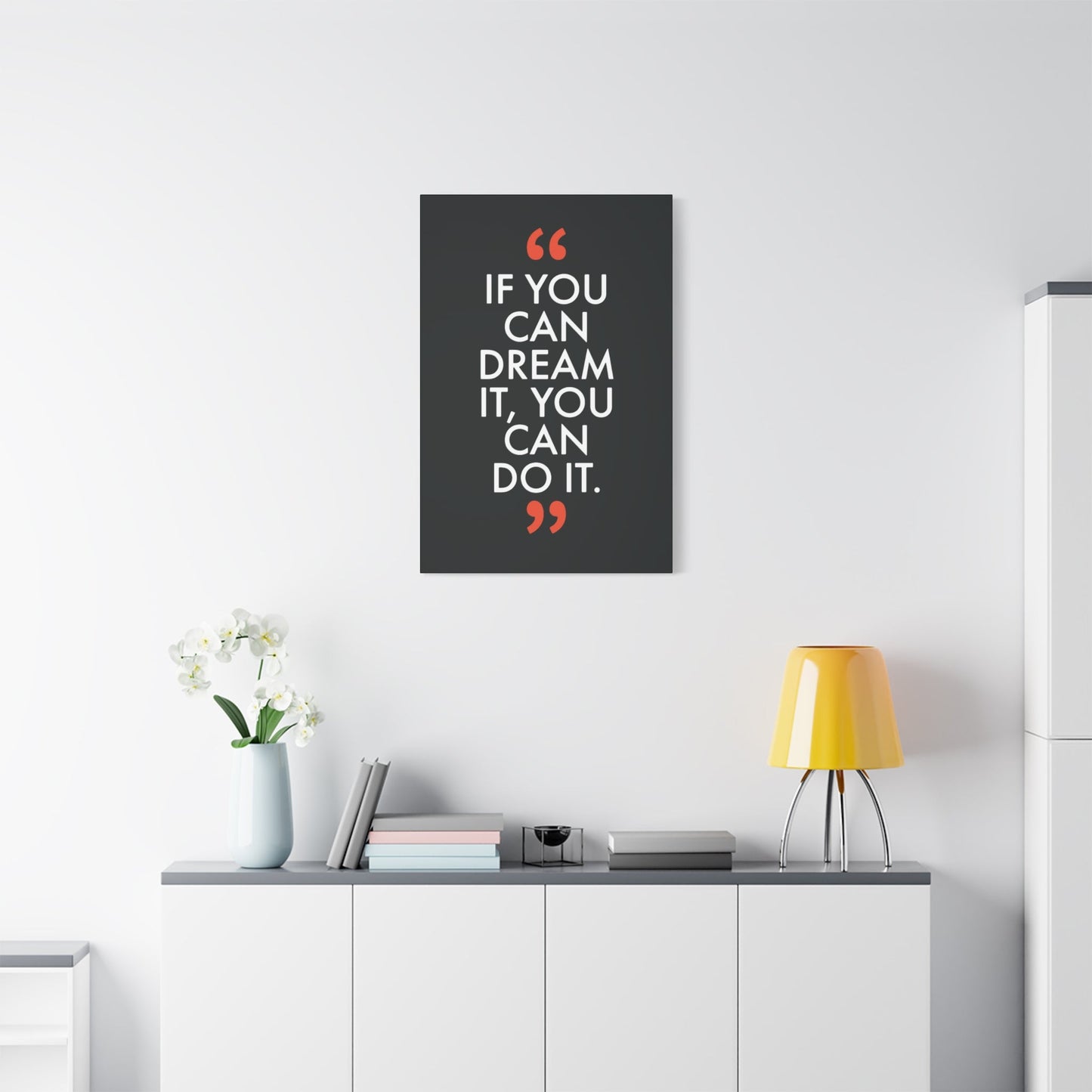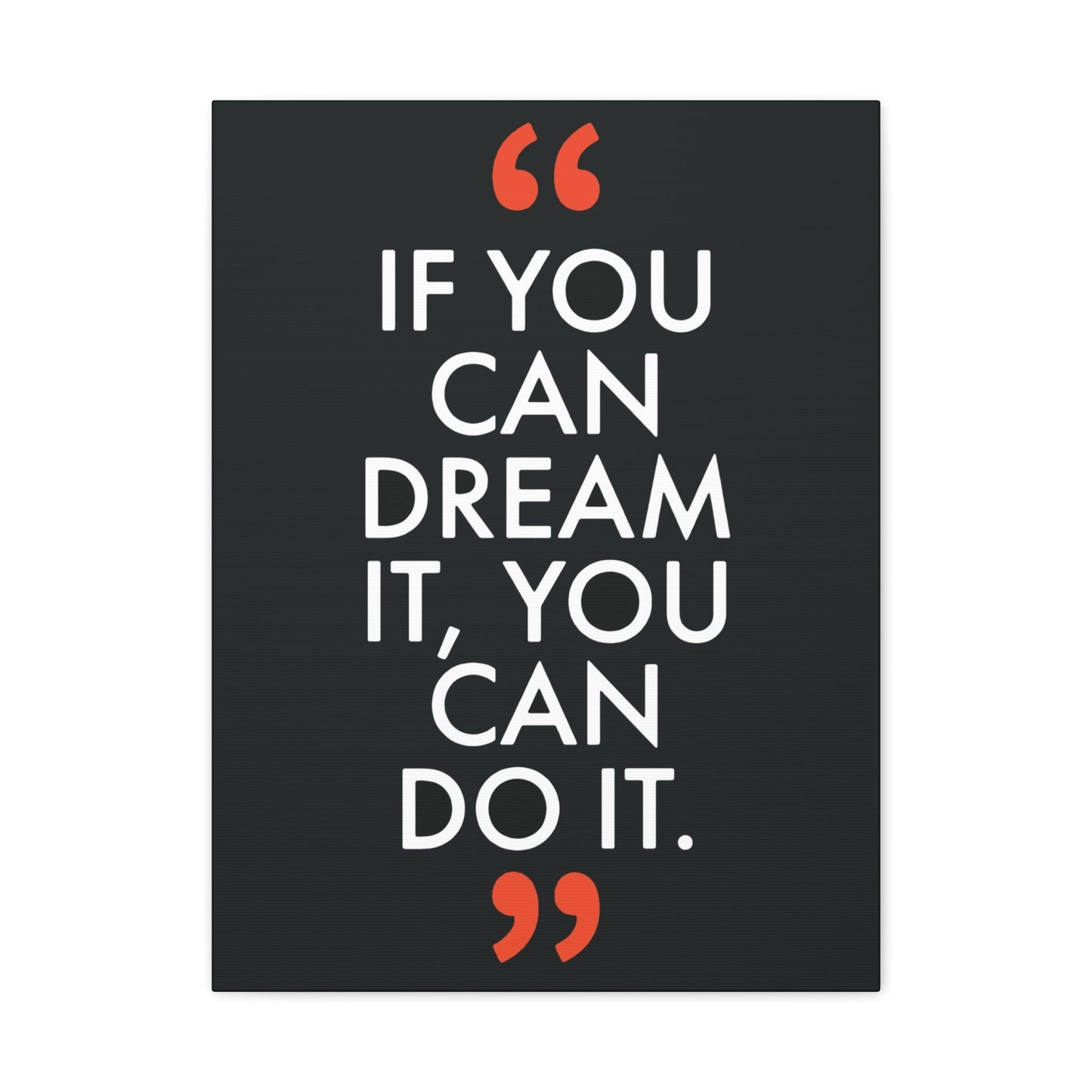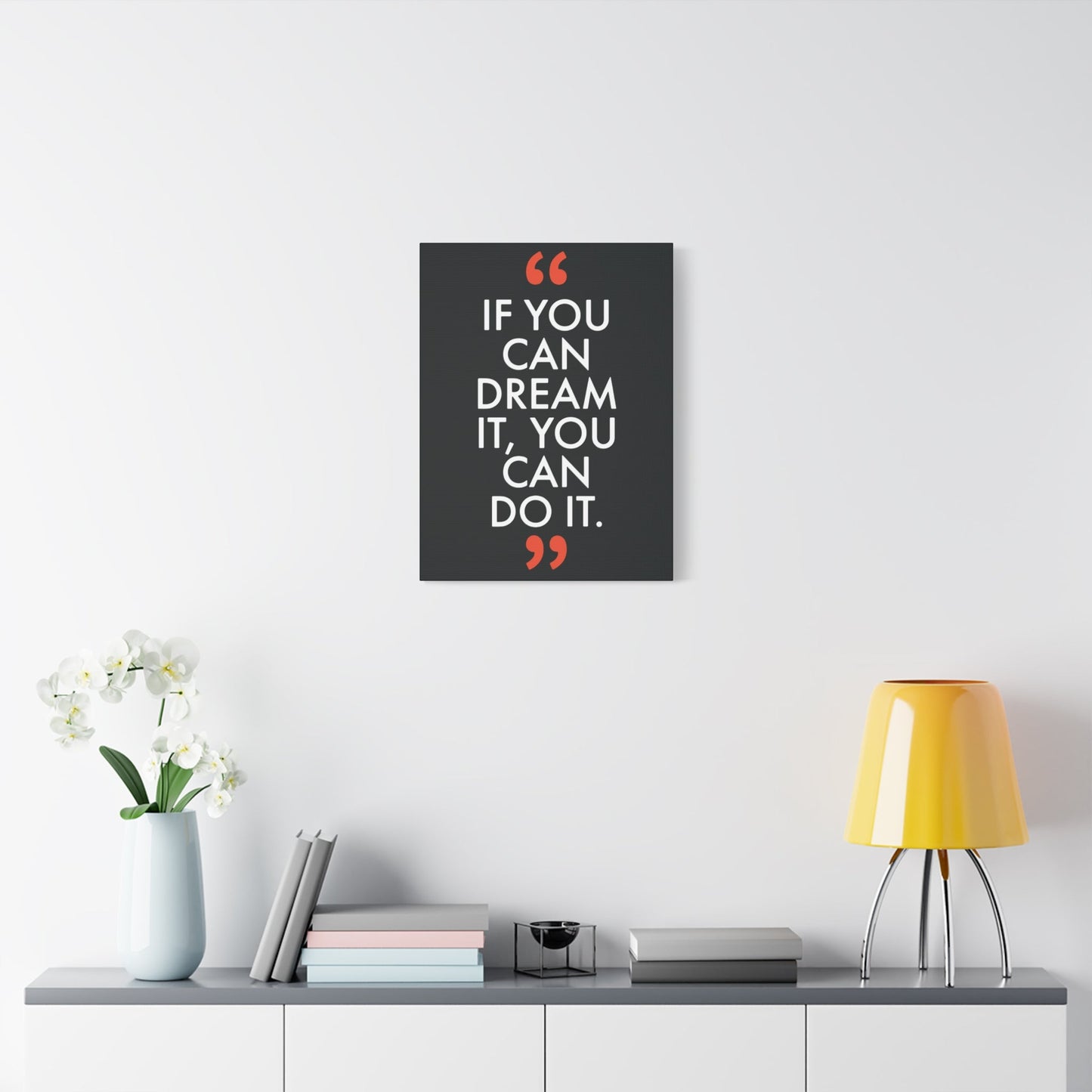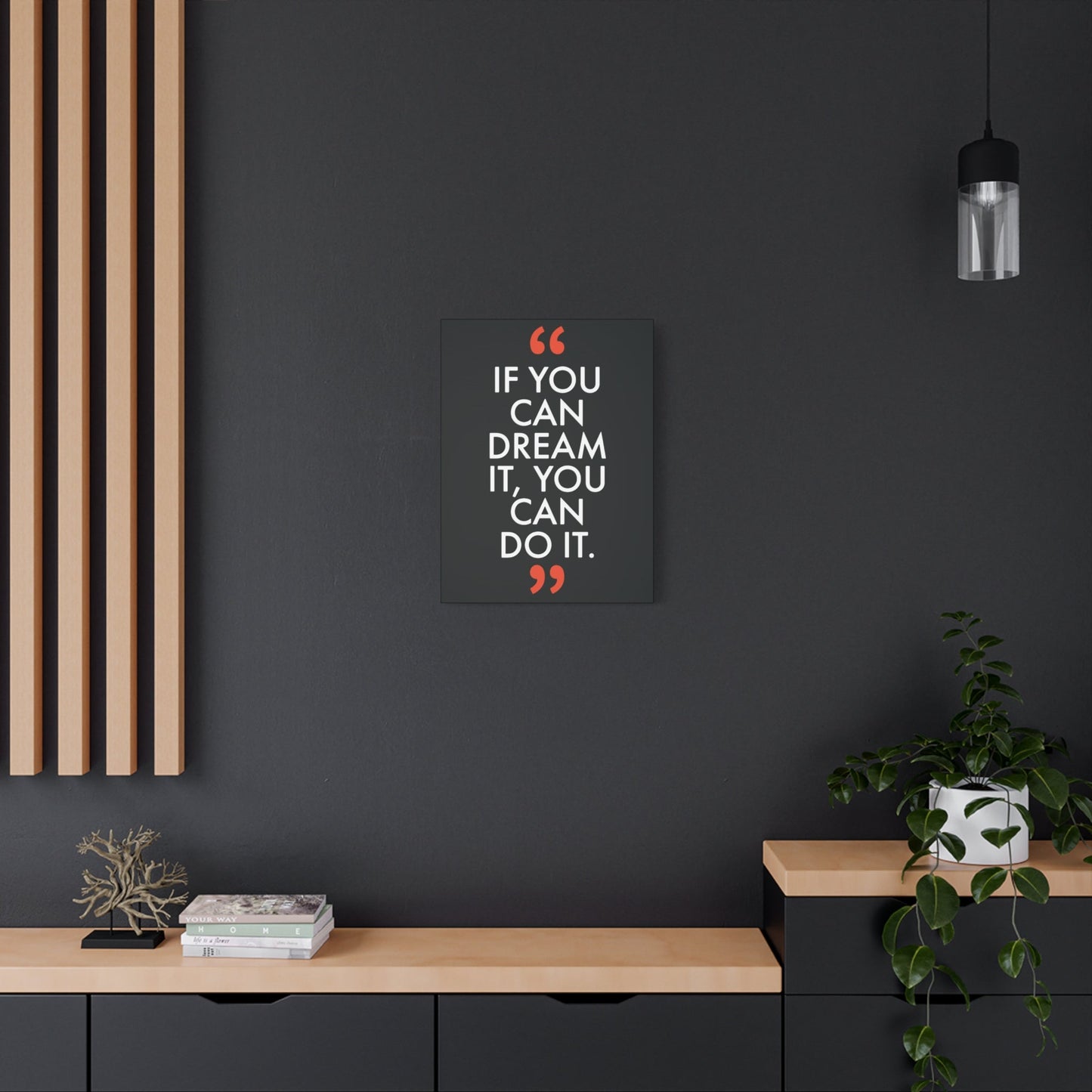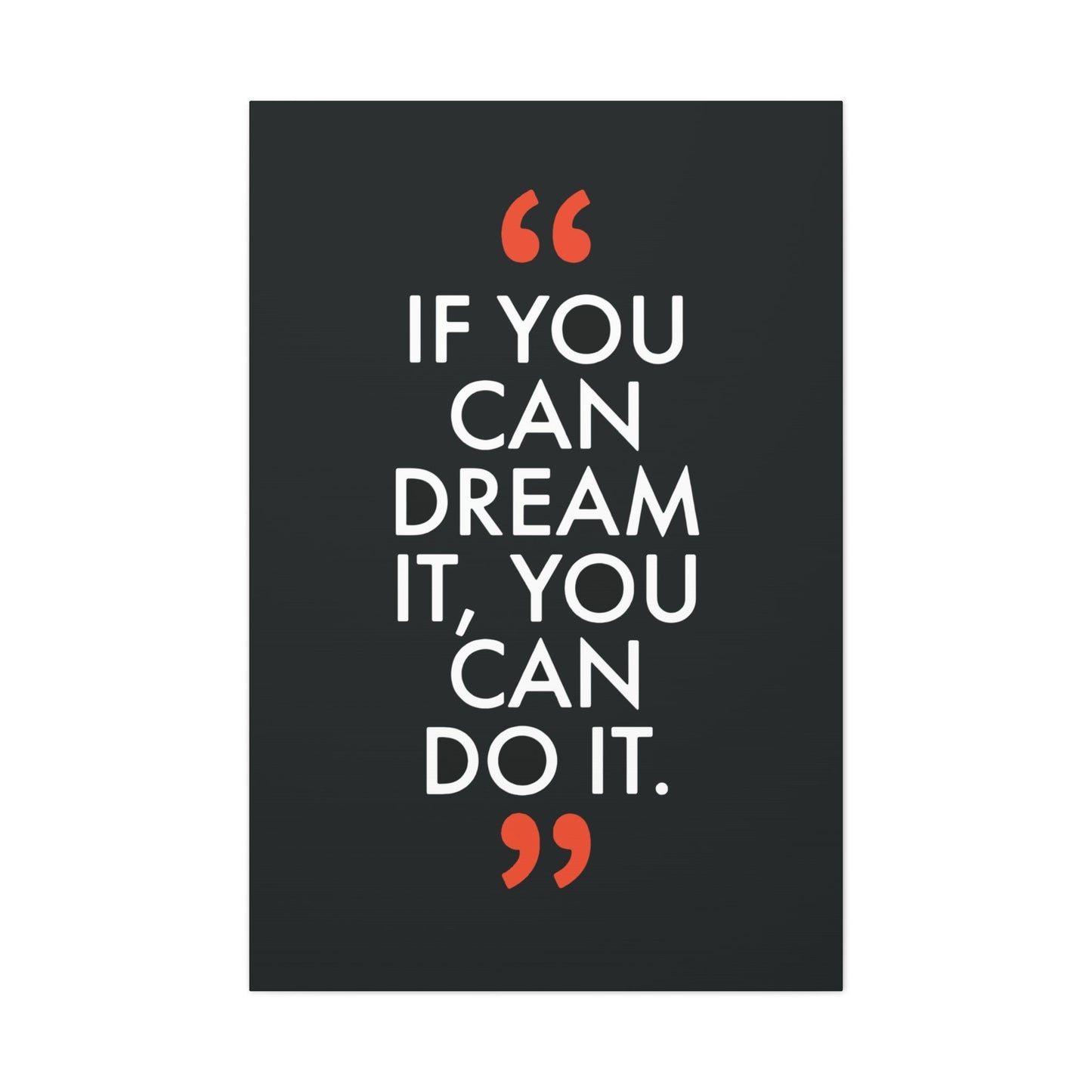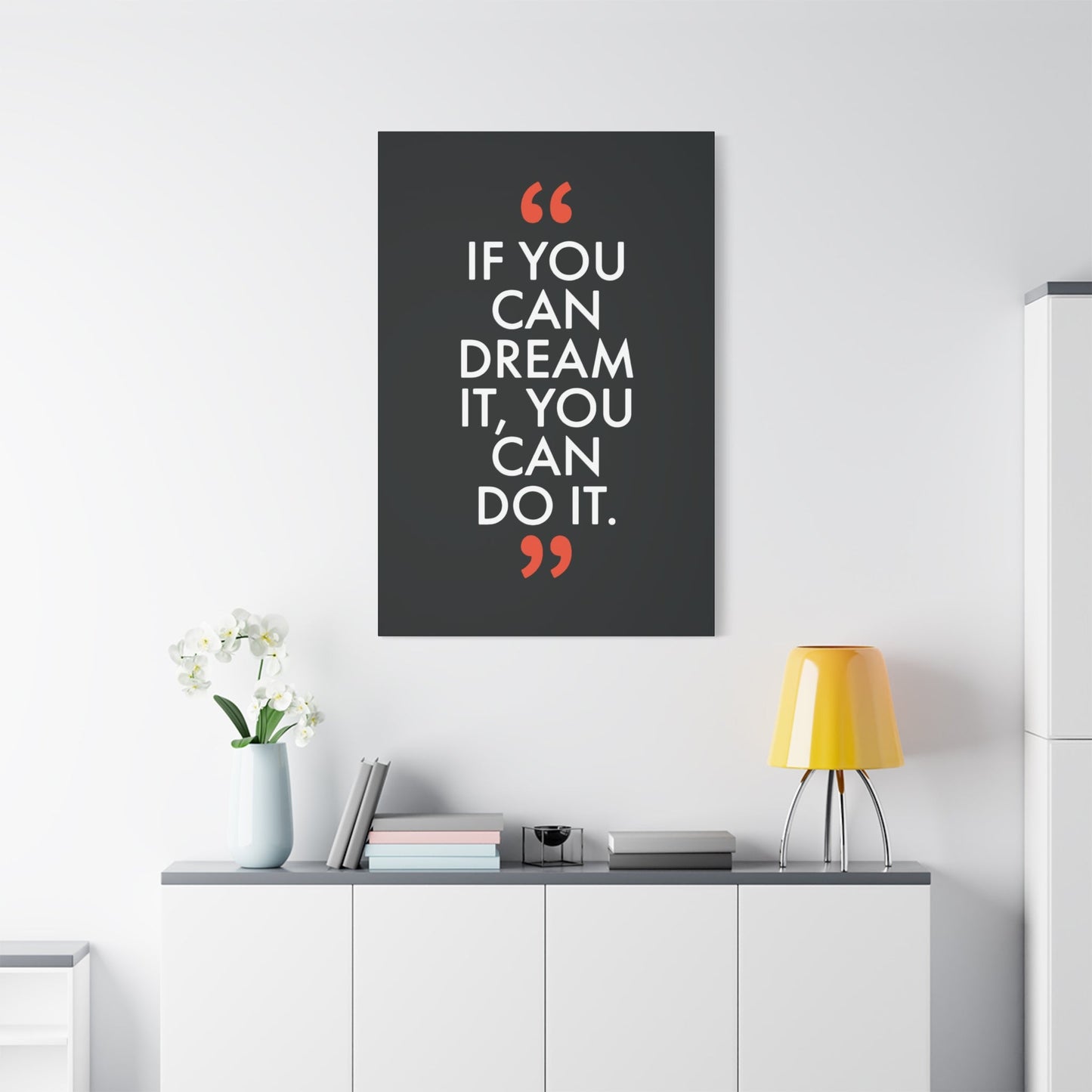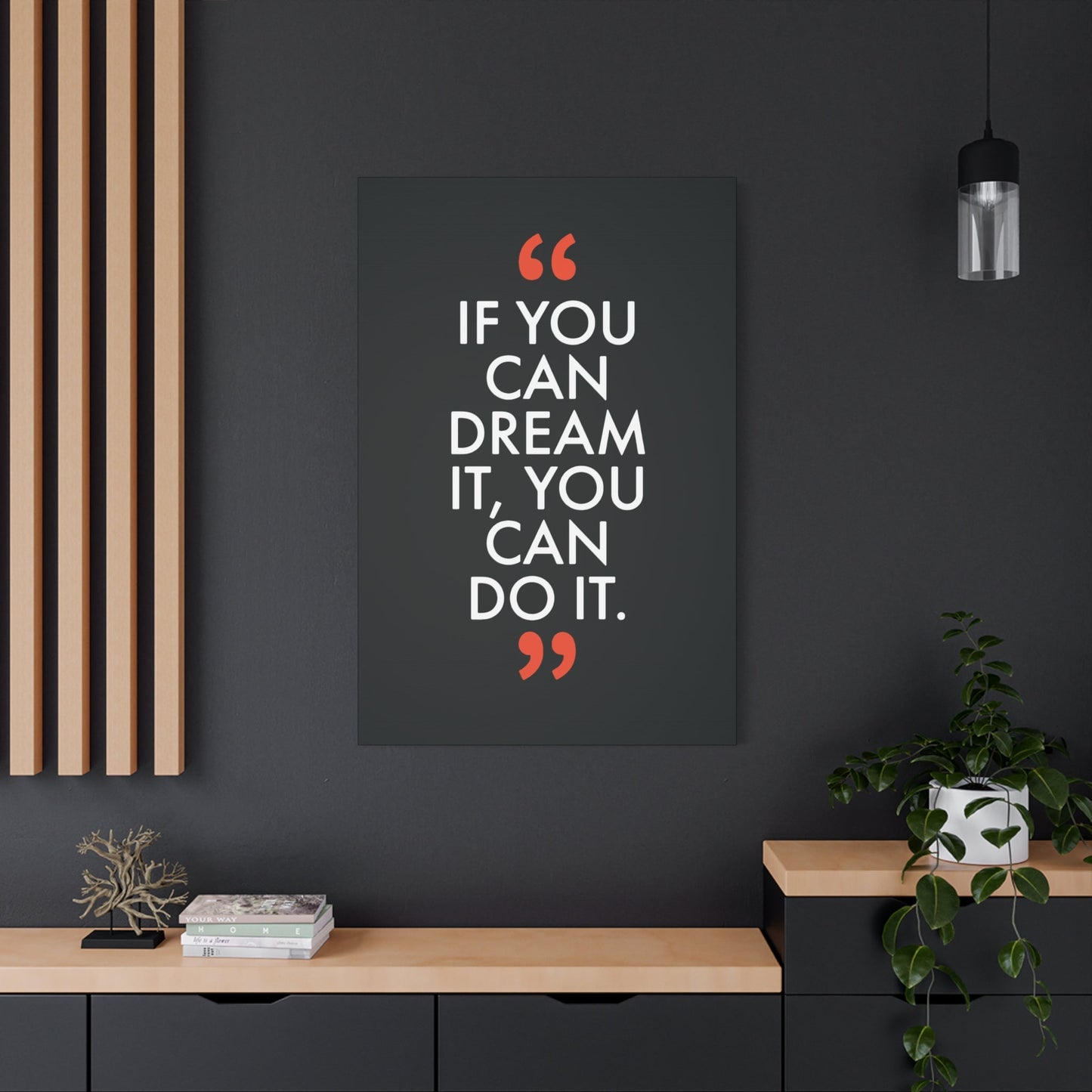Dare to Dream Wall Art: Turning Your Walls into a Source of Daily Motivation
Creative brilliance emerges when designers embrace audacious concepts that challenge conventional thinking. The world's most memorable designs originated from individuals who dared to envision something extraordinary, pushing boundaries beyond traditional limitations. These visionary creators understood that exceptional design requires courage, imagination, and unwavering commitment to innovative thinking.
Throughout history, groundbreaking designs have consistently emerged from bold ideas that initially seemed impossible or impractical. From architectural marvels that defied gravity to digital interfaces that revolutionized human interaction, every significant design breakthrough began with someone willing to challenge established norms. This creative courage transforms abstract concepts into tangible realities that shape our world.
The foundation of remarkable design lies in embracing uncertainty and viewing constraints as catalysts for innovation rather than barriers to creativity. When designers approach projects with fearless curiosity, they unlock possibilities that conservative thinking would never reveal. This mindset shift from limitation-focused to opportunity-centered thinking distinguishes truly innovative designers from those who merely follow established patterns.
Bold design ideas require a delicate balance between creative vision and practical execution. While imagination provides the spark for innovation, successful implementation demands technical expertise, strategic planning, and persistent refinement. The most impactful designs seamlessly blend artistic expression with functional purpose, creating solutions that are both visually stunning and remarkably effective.
Modern design challenges require fresh perspectives that acknowledge changing user expectations, technological capabilities, and cultural shifts. Designers who embrace bold ideas position themselves as problem-solvers rather than decoration providers, addressing complex challenges through creative solutions that resonate with contemporary audiences while anticipating future needs.
The journey from initial concept to finished design involves numerous iterations, feedback cycles, and refinement phases. Bold ideas often encounter resistance from stakeholders who prefer familiar approaches, making it essential for designers to develop compelling presentation skills and persuasive arguments that demonstrate the value of innovative thinking over conventional solutions.
Visionary Thinking: Foundations of Creative Excellence
Visionary thinking represents the cornerstone of exceptional design work, requiring designers to see beyond current limitations and imagine possibilities that others overlook. This cognitive approach involves questioning assumptions, exploring alternative perspectives, and maintaining curiosity about unexplored territories within the design landscape. Visionary designers cultivate habits of observation, analysis, and synthesis that enable them to identify patterns and opportunities invisible to conventional thinking.
The development of visionary thinking skills requires deliberate practice and continuous exposure to diverse influences spanning multiple disciplines, cultures, and historical periods. Designers who excel at generating bold ideas actively seek inspiration from unexpected sources, including nature, science, philosophy, literature, and emerging technologies. This cross-pollination of ideas creates fertile ground for innovative concepts that transcend traditional design boundaries.
Successful visionary thinking also demands emotional intelligence and empathy, allowing designers to understand deeply the needs, desires, and pain points of their target audiences. By combining analytical observation with emotional understanding, designers can create solutions that resonate on both intellectual and emotional levels, producing designs that feel both innovative and intuitively appropriate.
The cultivation of visionary thinking requires creating mental space for reflection, experimentation, and unstructured exploration. Many breakthrough ideas emerge during moments of relaxation or when the conscious mind releases its grip on specific problems, allowing subconscious processing to generate unexpected connections and insights. Designers who prioritize this reflective time often discover solutions that evaded their focused analytical efforts.
Visionary designers also develop comfort with ambiguity and uncertainty, recognizing that the path from initial idea to final execution rarely follows a straight line. This tolerance for uncertainty enables them to explore multiple possibilities simultaneously, remain open to unexpected discoveries, and adapt their vision as new information emerges throughout the design process.
The integration of visionary thinking with practical skills creates a powerful combination that enables designers to not only imagine remarkable possibilities but also execute them effectively. This balance between imagination and implementation distinguishes successful visionary designers from those whose ideas remain forever trapped in the conceptual realm without ever reaching fruition.
Breakthrough Innovation: Challenging Design Conventions
Breakthrough innovation in design emerges when creative professionals systematically challenge established conventions and question the fundamental assumptions underlying traditional approaches. This process requires courage to abandon comfortable methods and explore uncharted territories where failure is possible but extraordinary success becomes achievable. Innovation-focused designers approach each project as an opportunity to discover better ways of solving problems rather than simply applying proven formulas.
The identification of conventions worth challenging requires careful analysis of existing solutions, understanding their historical context, and recognizing changing circumstances that may have rendered traditional approaches obsolete. Many design conventions emerged from technical limitations, cultural preferences, or market conditions that no longer exist, yet they persist simply because they have become familiar and comfortable for both designers and users.
Successful convention challenging involves strategic risk assessment, ensuring that departures from established patterns serve meaningful purposes rather than change for its own sake. The most impactful design innovations maintain core functional requirements while dramatically improving user experience, aesthetic appeal, or implementation efficiency. This balance between innovation and utility ensures that bold ideas translate into practical improvements rather than mere novelty.
The process of challenging conventions often reveals hidden assumptions about user behavior, technological capabilities, or market acceptance that have limited design possibilities. By explicitly questioning these assumptions and testing alternative hypotheses, designers can unlock new solution spaces that were previously invisible or considered impossible. This systematic deconstruction of conventional wisdom opens pathways to genuinely innovative approaches.
Breakthrough innovation frequently involves combining elements from different domains, creating hybrid solutions that leverage the strengths of multiple approaches while addressing the weaknesses of traditional methods. This synthesis requires broad knowledge across various fields and the ability to recognize patterns and principles that can be adapted to new contexts. Cross-disciplinary thinking becomes essential for generating truly novel design concepts.
The implementation of convention-challenging innovations requires exceptional communication skills to help stakeholders understand the rationale behind departures from familiar approaches. Designers must articulate clearly how innovative solutions address real problems more effectively than conventional alternatives, providing evidence and reasoning that builds confidence in untested approaches. This persuasive capability often determines whether bold ideas receive the support necessary for successful execution.
Creative Risk-Taking: Embracing Design Uncertainty
Creative risk-taking represents an essential component of innovative design practice, requiring professionals to venture beyond safe, predictable approaches and explore territories where outcomes remain uncertain but potential rewards justify the investment. This mindset involves accepting that not every experimental idea will succeed while maintaining confidence that the learning gained from failed attempts contributes valuable insights for future projects.
The assessment of creative risks requires developing sophisticated judgment about which uncertainties offer the highest potential for breakthrough results relative to the investment required for exploration. Experienced designers learn to differentiate between risks that could lead to significant innovations and those that merely satisfy curiosity without generating meaningful value for clients or users. This risk evaluation skill becomes crucial for allocating limited time and resources effectively.
Successful risk-taking in design involves creating controlled environments where experimentation can occur without jeopardizing entire projects or client relationships. This might involve developing multiple concept variations, conducting small-scale tests, or creating proof-of-concept prototypes that demonstrate feasibility before committing fully to uncertain approaches. These risk mitigation strategies enable designers to explore bold ideas while maintaining professional credibility.
The psychological aspects of creative risk-taking include developing resilience to criticism, maintaining self-confidence despite setbacks, and learning from failures without becoming paralyzed by fear of future mistakes. Designers who excel at taking creative risks cultivate emotional intelligence that helps them process feedback constructively and maintain motivation throughout challenging developmental phases. This emotional resilience becomes particularly important when working on highly innovative projects that push boundaries.
Organizational support for creative risk-taking requires establishing cultures that reward experimentation and learning rather than only celebrating immediate successes. Companies and design teams that encourage calculated risk-taking create environments where innovation flourishes because designers feel safe to explore unconventional approaches without fear of severe consequences for well-reasoned attempts that don't achieve intended outcomes.
The documentation and communication of risk-taking processes help build organizational knowledge about which types of creative experiments yield valuable insights regardless of their immediate success or failure. This systematic approach to capturing learning from risky endeavors creates institutional memory that guides future decision-making and helps teams become more sophisticated about identifying worthwhile creative risks.
Conceptual Development: From Spark to Strategy
Conceptual development transforms initial creative sparks into comprehensive design strategies through systematic exploration, refinement, and validation processes. This evolutionary journey requires patience, analytical thinking, and iterative development skills that gradually shape abstract ideas into concrete solutions capable of addressing real-world challenges. Effective conceptual development balances creative freedom with strategic discipline, ensuring that innovative ideas mature into implementable designs.
The initial stages of conceptual development involve expanding and exploring preliminary ideas through various creative techniques including brainstorming, mind mapping, sketching, and analogical thinking. This divergent phase prioritizes quantity and variety over quality and feasibility, allowing designers to generate numerous possibilities before beginning the selection and refinement process. The goal is to prevent premature convergence on obvious solutions by thoroughly exploring the creative solution space.
As concepts mature, the development process gradually introduces practical constraints including technical requirements, budget limitations, timeline considerations, and user needs. This convergent phase requires careful evaluation of each concept's potential for success while maintaining the essential innovative qualities that made the original idea compelling. The challenge lies in preserving creative vision while adapting to real-world requirements.
Research and validation become increasingly important as concepts develop, requiring designers to test assumptions, gather feedback, and refine their understanding of user needs and market conditions. This evidence-gathering process might involve user interviews, competitive analysis, technical feasibility studies, and prototype testing. The insights gained through research help ensure that conceptual development remains grounded in reality while pursuing ambitious creative goals.
Documentation throughout the conceptual development process creates valuable records that capture decision-making rationale, alternative approaches considered, and lessons learned. This documentation serves multiple purposes including client communication, team coordination, and knowledge preservation for future projects. Clear documentation also helps maintain design consistency as concepts evolve through multiple iteration cycles.
The transition from concept to implementation requires developing detailed specifications, technical requirements, and execution plans that translate creative vision into actionable steps. This bridge-building phase demands both strategic thinking and attention to detail, ensuring that no essential elements are lost as abstract concepts become concrete designs. Successful conceptual development creates roadmaps that guide implementation while preserving the innovative spirit of original ideas.
Design Leadership: Inspiring Creative Teams
Design leadership extends beyond individual creativity to encompass the ability to inspire, guide, and coordinate teams of creative professionals working toward shared vision and goals. Effective design leaders cultivate environments where innovation flourishes while maintaining focus on practical outcomes that serve client needs and business objectives. This dual responsibility requires balancing creative freedom with strategic direction, ensuring that team efforts produce both artistic excellence and commercial success.
The cultivation of creative team culture involves establishing values, processes, and communication patterns that encourage experimentation while maintaining professional standards and meeting project requirements. Design leaders must model the creative risk-taking and innovative thinking they want to see from team members while providing the support and guidance necessary for less experienced designers to develop their own bold ideas. This mentoring aspect of design leadership requires patience, empathy, and exceptional communication skills.
Strategic vision development represents another crucial aspect of design leadership, requiring leaders to anticipate future trends, identify emerging opportunities, and position their teams to capitalize on evolving market conditions. This forward-thinking approach involves staying informed about technological developments, cultural shifts, and industry changes that might impact design practice. Leaders who excel at strategic thinking help their teams remain relevant and competitive in rapidly changing creative landscapes.
Project management and resource allocation become increasingly important as design leaders oversee multiple initiatives simultaneously while ensuring that each project receives appropriate attention and resources. This organizational aspect of leadership requires developing systems for tracking progress, managing deadlines, and coordinating activities across different projects and team members. Effective project management enables creative teams to focus on design excellence rather than logistical concerns.
Client relationship management often falls primarily to design leaders, requiring them to translate between creative vision and business requirements while maintaining strong relationships with stakeholders. This diplomatic aspect of leadership involves presenting design concepts persuasively, managing expectations realistically, and negotiating compromises that preserve essential creative elements while addressing practical constraints. These communication skills often determine whether bold design ideas receive the support necessary for successful implementation.
Team development and talent cultivation represent long-term aspects of design leadership that involve identifying individual strengths, providing growth opportunities, and helping team members advance their careers. Leaders who invest in developing their team members' skills and capabilities create stronger organizations while building loyalty and motivation that enhances creative output. This investment in human capital often yields returns through improved design quality and increased innovation.
Innovation Methodology: Systematic Creative Processes
Innovation methodology provides structured approaches for consistently generating, evaluating, and implementing creative ideas across diverse design contexts. These systematic processes help designers move beyond random inspiration to develop reliable capabilities for producing innovative solutions under various constraints and pressures. Effective methodologies balance creative freedom with analytical rigor, ensuring that innovative thinking leads to practical results rather than mere artistic expression.
Design thinking represents one widely adopted methodology that emphasizes human-centered problem solving through empathy, ideation, and experimentation. This approach begins with deep understanding of user needs and experiences, proceeds through intensive ideation phases, and concludes with rapid prototyping and testing cycles. The methodology's strength lies in its emphasis on user validation and iterative refinement, reducing the risk that innovative designs will fail to meet real-world needs.
Lean startup methodologies adapted for design practice focus on rapid hypothesis testing and validated learning to accelerate innovation cycles while minimizing resource waste. This approach emphasizes building minimum viable prototypes that test core assumptions about user behavior, technical feasibility, and market acceptance. The methodology's emphasis on data-driven decision making helps designers distinguish between promising innovations and attractive ideas that lack practical viability.
Systems thinking approaches encourage designers to consider the broader contexts within which their solutions will operate, including social, cultural, economic, and environmental factors that might influence design success. This holistic perspective helps identify unintended consequences and optimization opportunities that might be missed by narrower problem-solving approaches. Systems-oriented methodologies often lead to more sustainable and impactful design solutions.
Collaborative innovation methodologies leverage the collective creativity of diverse teams through structured brainstorming sessions, design workshops, and co-creation activities. These approaches recognize that breakthrough innovations often emerge from the intersection of different perspectives, expertise areas, and cultural backgrounds. Effective collaborative methodologies include techniques for managing group dynamics, facilitating productive discussions, and synthesizing diverse inputs into coherent design directions.
Measurement and evaluation frameworks help innovation methodologies maintain accountability for producing valuable results rather than just generating creative activity. These assessment systems might include metrics for user satisfaction, business impact, technical performance, and creative quality. By establishing clear success criteria and tracking progress against these standards, methodologies ensure that innovative efforts contribute meaningfully to organizational goals and user needs.
Aesthetic Revolution: Redefining Visual Standards
Aesthetic revolution in design involves challenging prevailing visual standards and introducing new approaches to color, form, typography, and composition that reshape how audiences perceive and interact with designed objects and spaces. These revolutionary movements often emerge from technological developments, cultural shifts, or individual designers bold enough to reject established conventions in favor of unexplored aesthetic territories. Successful aesthetic revolutions balance innovation with communication effectiveness, ensuring that new visual languages serve functional purposes while creating distinctive experiences.
The historical pattern of aesthetic revolution reveals recurring cycles where established styles become stagnant and new movements emerge to address changing needs and sensibilities. Each revolutionary period builds upon previous innovations while rejecting aspects that no longer serve contemporary purposes. Understanding this historical context helps contemporary designers identify opportunities for meaningful aesthetic innovation rather than pursuing change for its own sake.
Color theory and application represent fertile ground for aesthetic revolution, particularly as new technologies enable previously impossible color combinations and effects. Digital media, advanced printing techniques, and programmable lighting systems expand the designer's palette beyond traditional limitations while creating new possibilities for emotional expression and functional communication. Revolutionary color approaches often challenge cultural associations and psychological expectations while maintaining visual coherence.
Typography and letterform design continue evolving as reading habits change and new display technologies emerge. Revolutionary typographic approaches might involve creating entirely new typefaces, developing innovative layout systems, or integrating text with other visual elements in unprecedented ways. These innovations must balance creative expression with legibility requirements while acknowledging diverse cultural contexts and accessibility needs.
Compositional innovation challenges traditional principles of visual organization including symmetry, hierarchy, balance, and proportion. Revolutionary approaches might involve asymmetrical layouts, unconventional grid systems, or dynamic compositions that change based on user interaction or environmental conditions. These innovative compositional strategies must maintain functional effectiveness while creating memorable visual experiences that distinguish designed works from conventional alternatives.
The adoption of revolutionary aesthetics requires careful consideration of audience readiness and cultural context, as overly radical departures from familiar visual languages might alienate intended users. Successful aesthetic revolutionaries develop sensitivity for introducing innovative elements gradually while building acceptance for more dramatic changes over time. This strategic approach to aesthetic evolution helps ensure that revolutionary ideas gain traction rather than being dismissed as incomprehensible novelties.
User Experience Innovation: Human-Centered Design Revolution
User experience innovation transforms how people interact with designed products, services, and environments by prioritizing human needs, behaviors, and emotions throughout the design process. This human-centered approach represents a fundamental shift from designer-centered thinking toward empathetic understanding of user goals, pain points, and contextual requirements. Successful UX innovation creates solutions that feel intuitive, efficient, and emotionally satisfying while accomplishing practical objectives effectively.
The foundation of UX innovation lies in developing sophisticated understanding of user research methodologies including ethnographic observation, contextual inquiry, usability testing, and behavioral analysis. These research techniques reveal insights about how people actually behave rather than how designers assume they behave, often uncovering surprising patterns that inspire innovative solution approaches. Deep user research helps designers challenge their own assumptions while developing empathy for diverse user perspectives and needs.
Information architecture innovation involves creating new approaches to organizing, labeling, and connecting content that align with user mental models rather than internal organizational structures. Revolutionary information architecture might involve non-hierarchical organization systems, dynamic content relationships, or personalized navigation structures that adapt to individual user behaviors and preferences. These innovations help users find and use information more efficiently while reducing cognitive load.
Interaction design innovation explores new modalities for human-computer communication including voice interfaces, gesture recognition, haptic feedback, and augmented reality overlays. These emerging interaction paradigms require designers to understand not only visual design principles but also cognitive psychology, motor skills, and sensory processing. Innovation in interaction design often involves combining multiple modalities to create more natural and efficient communication channels between humans and digital systems.
Accessibility innovation ensures that designed experiences serve users with diverse abilities and limitations while often revealing design improvements that benefit all users. Universal design principles encourage innovations that accommodate various physical, cognitive, and situational disabilities without requiring separate solutions. This inclusive approach to innovation often leads to breakthrough insights that improve usability for entire user populations rather than just specific demographic segments.
Emotional design innovation recognizes that user experience extends beyond functional task completion to encompass the feelings, memories, and associations that designed interactions create. This approach involves understanding emotional triggers, designing for specific emotional outcomes, and creating experiences that build positive relationships between users and designed products or services. Emotional innovation often distinguishes memorable experiences from merely functional ones, creating competitive advantages through user loyalty and advocacy.
Digital Design Frontiers
Technology integration in design practice involves leveraging emerging digital tools, platforms, and capabilities to create previously impossible experiences while maintaining focus on human needs and aesthetic quality. This integration requires understanding both technological possibilities and limitations while developing skills for adapting rapidly to new tools and techniques. Successful technology integration enhances rather than dominates design solutions, using technical capabilities to amplify creative vision rather than substituting for it.
Artificial intelligence and machine learning technologies offer new possibilities for personalized design experiences, automated content generation, and predictive user interface adaptations. Designers working with AI tools must understand both the capabilities and limitations of these systems while maintaining creative control over aesthetic and strategic decisions. The challenge lies in leveraging AI assistance for routine tasks while preserving human judgment for complex creative and ethical considerations.
Augmented and virtual reality technologies create opportunities for immersive design experiences that blur boundaries between physical and digital spaces. These emerging platforms require designers to understand spatial relationships, temporal sequencing, and sensory integration while developing new skills for three-dimensional design thinking. AR and VR design innovation often involves creating entirely new categories of user experience that have no direct precedents in traditional design practice.
Internet of Things (IoT) integration enables designed products to communicate with each other and adapt to changing environmental conditions or user behaviors. This connectivity creates opportunities for responsive design solutions that adjust automatically to optimize performance or user experience. Designing for IoT environments requires understanding network protocols, data privacy concerns, and system reliability requirements while maintaining focus on user-centered outcomes.
Blockchain and distributed systems technologies enable new approaches to ownership, authentication, and value exchange that might influence design practice in unexpected ways. These technologies could enable new business models for design services, create verification systems for design authenticity, or facilitate more direct relationships between designers and end users. Understanding these emerging systems helps designers anticipate and prepare for potential industry changes.
Real-time collaboration technologies enable distributed design teams to work together more effectively while opening possibilities for user participation in design processes. Cloud-based design tools, video collaboration platforms, and shared workspace systems reduce geographical barriers while creating new challenges for maintaining design quality and team coordination. These technological capabilities require developing new workflows and communication protocols for distributed creative work.
Sustainable Creative Solutions
Environmental design represents a growing movement toward creating solutions that minimize ecological impact while maintaining aesthetic quality and functional effectiveness. This approach requires understanding environmental science, materials engineering, and lifecycle assessment while developing creative strategies that address sustainability challenges without compromising design excellence. Sustainable design innovation often reveals opportunities for cost reduction, performance improvement, and market differentiation through environmental consciousness.
Materials innovation plays a crucial role in environmental design, involving research into renewable resources, biodegradable alternatives, and manufacturing processes with reduced environmental impact. Designers increasingly need knowledge about material properties, supply chain considerations, and end-of-life disposal options to make informed decisions about sustainable material selection. This expertise enables creative solutions that achieve both aesthetic goals and environmental objectives simultaneously.
Energy efficiency considerations influence design decisions across multiple scales from individual products to entire built environments. Understanding energy consumption patterns, renewable energy systems, and efficiency optimization strategies helps designers create solutions that reduce environmental impact while often improving user experience through lower operating costs. Energy-conscious design often leads to innovative approaches that challenge traditional assumptions about form and function relationships.
Circular economy principles encourage designing for durability, repairability, and recyclability rather than planned obsolescence and disposal. This approach requires understanding product lifecycles, maintenance requirements, and material recovery systems while creating designs that remain attractive and functional throughout extended use periods. Circular design thinking often leads to innovative business models and user relationships that provide ongoing value rather than single-transaction exchanges.
Biophilic design principles recognize human psychological needs for connection with natural environments while creating opportunities for integrating living systems into designed spaces. This approach might involve incorporating plants, natural materials, organic forms, or natural lighting patterns into design solutions. Biophilic innovation often improves user wellbeing while contributing to environmental health through air purification, temperature regulation, and habitat creation.
Local sourcing and production strategies reduce transportation environmental costs while often supporting regional economies and creating distinctive aesthetic qualities tied to local materials and craft traditions. This approach requires understanding regional manufacturing capabilities, material availability, and cultural preferences while developing design solutions that celebrate rather than suppress local characteristics. Localized design innovation often creates competitive advantages through reduced costs, shortened supply chains, and enhanced cultural authenticity.
Cultural Impact: Design as Social Catalyst
Cultural impact in design recognizes that creative solutions shape social behavior, cultural values, and collective understanding while bearing responsibility for contributing positively to community wellbeing and social progress. This perspective requires understanding sociological principles, cultural anthropology, and community dynamics while developing design solutions that address social challenges and promote positive cultural change. Socially conscious design innovation often creates value that extends far beyond immediate functional objectives.
Social justice considerations in design involve ensuring that creative solutions serve diverse communities equitably while avoiding reinforcement of discriminatory patterns or exclusionary practices. This approach requires understanding power dynamics, historical inequities, and systemic barriers that might prevent certain groups from accessing or benefiting from designed solutions. Justice-oriented design innovation often reveals opportunities for addressing social problems through creative problem-solving approaches.
Community engagement processes involve collaborating with affected communities throughout design development rather than imposing external solutions on local situations. This participatory approach requires developing skills for facilitating community discussions, incorporating diverse perspectives, and building consensus around design directions. Community-centered innovation often produces more effective and sustainable solutions while building local capacity for ongoing problem-solving.
Cultural preservation through design involves documenting, celebrating, and revitalizing traditional knowledge, craft techniques, and aesthetic traditions while adapting them for contemporary contexts. This approach requires sensitivity to cultural ownership issues, respect for traditional knowledge holders, and understanding of appropriate ways to honor cultural heritage. Preservation-focused innovation often creates economic opportunities for traditional communities while enriching contemporary design practice.
Behavioral change design involves creating solutions that encourage positive individual and collective behaviors including health promotion, environmental conservation, and social cooperation. This approach requires understanding psychology, behavioral economics, and motivation theory while developing design interventions that make positive behaviors easier, more attractive, or more rewarding. Behavior-focused innovation often addresses complex social challenges through relatively simple design modifications.
Global citizenship through design involves understanding how local design decisions connect to global systems and impact people and environments far from the immediate design context. This perspective requires considering supply chain ethics, environmental justice, and economic equity while developing solutions that contribute positively to global wellbeing rather than merely solving local problems. Globally conscious design innovation often reveals unexpected connections and responsibilities that influence design decisions.
Strategic Planning: Long-term Vision Development
Strategic planning in design involves developing comprehensive visions for long-term creative and business success while aligning immediate projects with broader goals and values. This forward-thinking approach requires understanding market trends, technological developments, and cultural shifts while maintaining flexibility to adapt as conditions change. Effective strategic planning creates frameworks for decision-making that help designers navigate uncertainty while building sustainable competitive advantages through consistent innovation.
Market analysis and trend forecasting help designers anticipate future opportunities and challenges while positioning their skills and services appropriately. This research might involve studying demographic changes, technological adoption patterns, economic indicators, and cultural movements that could influence design demand. Understanding market dynamics helps designers make informed decisions about skill development, specialization areas, and business model evolution.
Competitive analysis reveals both threats and opportunities within the design marketplace while identifying gaps that innovative approaches might fill. This analysis should examine not only direct competitors but also adjacent industries, emerging technologies, and alternative solutions that might disrupt traditional design categories. Comprehensive competitive understanding helps designers develop unique value propositions that differentiate their work from available alternatives.
Portfolio development strategy involves curating and presenting work that demonstrates capabilities while building reputation and credibility within target markets. This might involve selecting projects that showcase specific skills, working with particular client types, or exploring specific aesthetic directions. Strategic portfolio development helps designers attract desired opportunities while building expertise in chosen specialization areas.
Collaboration and partnership strategies involve identifying opportunities for working with other professionals, organizations, or institutions that could amplify design impact and reach new audiences. These relationships might involve formal business partnerships, informal creative collaborations, or strategic alliances that combine complementary capabilities. Effective collaboration often enables designers to undertake larger projects and explore new creative territories than would be possible independently.
Professional development planning ensures that designers maintain and expand their capabilities in response to changing industry requirements and personal goals. This might involve formal education, conference attendance, workshop participation, or self-directed learning in new skill areas. Strategic professional development helps designers remain competitive while pursuing creative interests and career advancement opportunities.
Creative Process Optimization: Enhancing Design Workflow
Creative process optimization involves systematically improving the methods, tools, and workflows that designers use to develop ideas and execute projects. This optimization requires understanding both creative psychology and practical productivity principles while developing personalized approaches that enhance both creative quality and efficiency. Effective process optimization enables designers to produce better work in less time while maintaining enthusiasm and avoiding burnout throughout demanding project cycles.
Ideation techniques optimization involves experimenting with various brainstorming methods, creative exercises, and inspiration sources to identify approaches that consistently generate high-quality ideas. This might involve structured techniques like SCAMPER or morphological analysis, unstructured approaches like free association or stream-of-consciousness writing, or hybrid methods that combine analytical and intuitive elements. Effective ideation optimization helps designers overcome creative blocks while expanding their creative capabilities.
Project management system development helps designers organize tasks, track progress, and coordinate activities across multiple concurrent projects. This might involve digital tools like project management software, traditional methods like physical planners and notebooks, or hybrid approaches that combine multiple organizational systems. Effective project management reduces stress while ensuring that deadlines are met and quality standards are maintained throughout complex development processes.
Feedback and critique processes involve establishing systematic methods for gathering input from clients, colleagues, and users throughout design development. This might include formal review cycles, informal consultation sessions, or user testing protocols that provide valuable insights for design refinement. Effective feedback systems help designers identify problems early while building stronger relationships with stakeholders and improving final outcomes.
Quality assurance protocols ensure that finished designs meet professional standards and project requirements before delivery to clients. This might involve systematic checklists, peer review processes, or automated testing procedures that catch errors and inconsistencies. Effective quality assurance reduces revision cycles while building reputation for reliability and attention to detail that supports long-term client relationships.
Time management strategies help designers balance creative exploration with deadline requirements while maintaining work-life balance and avoiding burnout. This might involve time-blocking techniques, priority matrix systems, or energy management approaches that align demanding creative work with personal rhythms and capabilities. Effective time management enables sustained creative productivity while preserving mental health and personal relationships.
Industry Evolution: Adapting to Change
Industry evolution in design reflects broader technological, economic, and social changes that continuously reshape professional practice requirements and opportunities. Understanding these evolutionary patterns helps designers anticipate changes, adapt their skills appropriately, and position themselves advantageously within evolving professional landscapes. Successful adaptation requires balancing stability with flexibility, maintaining core design principles while embracing new tools, methods, and market demands.
Digital transformation continues reshaping design practice by introducing new tools, platforms, and distribution channels while changing client expectations and project requirements. This transformation affects everything from initial concept development through final delivery and ongoing maintenance. Designers who successfully navigate digital evolution develop hybrid capabilities that combine traditional design skills with technological fluency and digital-first thinking approaches.
Globalization impacts design practice by expanding market opportunities while increasing competition and creating new challenges for cross-cultural communication and collaboration. Global design practice requires understanding diverse cultural contexts, working across time zones and language barriers, and developing solutions that function effectively in multiple cultural and regulatory environments. This international perspective often enhances creative capabilities while expanding business opportunities.
Economic fluctuations influence design demand, pricing structures, and client relationships while creating both challenges and opportunities for adaptive designers. Economic downturns might reduce luxury design spending while increasing demand for efficiency-focused solutions, while economic expansions might create opportunities for more experimental and expensive design approaches. Understanding economic cycles helps designers adjust their strategies and maintain stability through varying market conditions.
Regulatory changes affect design practice through accessibility requirements, environmental standards, data privacy laws, and professional licensing requirements. Staying informed about regulatory developments helps designers avoid compliance problems while sometimes revealing new market opportunities created by regulatory requirements. Proactive regulatory awareness often provides competitive advantages over less-informed competitors.
Educational system evolution influences the preparation of new designers entering the profession while creating opportunities for experienced designers to contribute to educational programs through teaching, mentoring, or curriculum development. Understanding educational trends helps established designers identify knowledge gaps in emerging professionals while finding ways to contribute to industry development through educational involvement.
Collaborative Innovation: Team-Based Creative Excellence
Collaborative innovation leverages the collective creativity, expertise, and perspectives of diverse team members to achieve creative outcomes that exceed what any individual contributor could accomplish independently. This approach requires developing skills for facilitating productive creative discussions, managing interpersonal dynamics, and synthesizing diverse inputs into coherent design directions. Effective collaborative innovation creates environments where different perspectives enhance rather than compete with each other, producing breakthrough solutions through creative synergy.
Team composition strategies involve assembling groups with complementary skills, perspectives, and working styles that enhance collective creative capabilities. This might involve combining designers with different specialization areas, including non-designers with relevant expertise, or incorporating stakeholders with unique perspectives on user needs or market conditions. Effective team composition balances diversity with compatibility, ensuring that different perspectives contribute constructively to shared goals.
Communication protocols help collaborative teams share ideas effectively while avoiding misunderstandings and conflicts that might impede creative progress. This might involve establishing clear roles and responsibilities, creating structured methods for presenting and discussing ideas, or developing shared vocabulary and reference frameworks that enable precise communication about design concepts. Effective communication systems enable teams to build upon each other's ideas rather than working at cross-purposes.
Conflict resolution skills become essential when creative teams encounter disagreements about design directions, resource allocation, or project priorities. These skills might involve mediation techniques, consensus-building methods, or structured decision-making processes that help teams work through disagreements constructively. Effective conflict resolution transforms creative tensions into productive energy that drives innovation rather than creating destructive interpersonal dynamics.
Creative synthesis capabilities help teams combine diverse inputs and perspectives into unified design solutions that reflect the best contributions from all team members. This might involve techniques for identifying common themes across different ideas, methods for combining elements from multiple concepts, or processes for iteratively refining collective solutions. Effective synthesis ensures that collaborative work produces coherent outcomes rather than compromised solutions that satisfy no one completely.
Documentation and knowledge sharing systems help collaborative teams preserve insights, decisions, and creative processes for future reference and organizational learning. This might involve structured project documentation, informal knowledge sharing sessions, or digital systems that capture and organize creative assets and decision-making rationale. Effective documentation enables teams to build upon previous work while sharing successful approaches with other collaborative efforts.
Future-Forward Design: Anticipating Tomorrow's Needs
Future-forward design involves anticipating emerging needs, technologies, and cultural conditions while creating solutions that remain relevant and effective as circumstances change. This proactive approach requires understanding trend analysis, scenario planning, and adaptive design principles while maintaining focus on timeless human needs that persist across technological and social changes. Future-focused designers develop solutions that evolve gracefully rather than becoming obsolete as conditions change.
Scenario planning techniques help designers explore multiple possible futures and develop solutions that function effectively across various potential conditions. This might involve creating detailed narratives about different technological developments, economic conditions, or social changes that could impact design requirements. Effective scenario planning helps designers identify robust solutions that serve users well regardless of which specific future scenarios actually emerge.
Emerging technology monitoring involves staying informed about technological developments that might create new design opportunities or require adaptation of existing approaches. This requires understanding research and development trends, patent applications, investment patterns, and experimental projects that might influence future design practice. Early awareness of emerging technologies often provides competitive advantages through earlier adoption and deeper expertise development.
Cultural trend analysis examines changing values, behaviors, and preferences that might influence future design requirements and opportunities. This might involve studying generational differences, lifestyle changes, educational trends, or political movements that could reshape user expectations and needs. Understanding cultural evolution helps designers create solutions that align with emerging rather than declining cultural patterns.
Adaptive design principles create solutions that can evolve and improve over time rather than requiring complete replacement when conditions change. This might involve modular architecture that supports component updates, flexible interfaces that accommodate new features, or open systems that integrate with future technologies. Adaptive design thinking often creates long-term value while reducing environmental impact through extended product lifecycles.
Sustainability considerations become increasingly important as environmental awareness grows and resource constraints become more apparent. Future-forward designers integrate environmental thinking throughout their process rather than treating sustainability as an add-on consideration. This integrated approach often reveals innovative opportunities that address both environmental needs and user requirements more effectively than conventional solutions.
Conclusion
The journey through revolutionary design concepts reveals that exceptional creative work emerges from the intersection of bold vision, systematic methodology, and deep understanding of human needs. Throughout this exploration, we have examined how groundbreaking designs consistently originate from individuals and teams willing to challenge conventional thinking while maintaining focus on practical outcomes that serve real-world requirements.
The evolution of design practice demonstrates that innovation requires both creative courage and analytical rigor, combining imaginative thinking with evidence-based decision making. Successful designers develop capabilities that span artistic expression, technical expertise, strategic planning, and collaborative leadership, creating comprehensive skill sets that enable them to navigate complex creative challenges while delivering meaningful value to users and stakeholders.
Technology continues reshaping design possibilities while highlighting the enduring importance of human-centered thinking that prioritizes user experience over technological novelty. The most successful design innovations leverage technological capabilities to enhance rather than replace human judgment, creating solutions that feel both cutting-edge and intuitively appropriate for their intended contexts and audiences.
Environmental consciousness and social responsibility increasingly influence design decisions as practitioners recognize their role in addressing global challenges through creative problem-solving. This expanded view of design responsibility creates opportunities for meaningful work that contributes positively to community wellbeing while often revealing innovative approaches that provide competitive advantages through differentiation and authenticity.













